A Photographer’s Paradise: Capturing the Beauty of Bingling Temple Grottoes
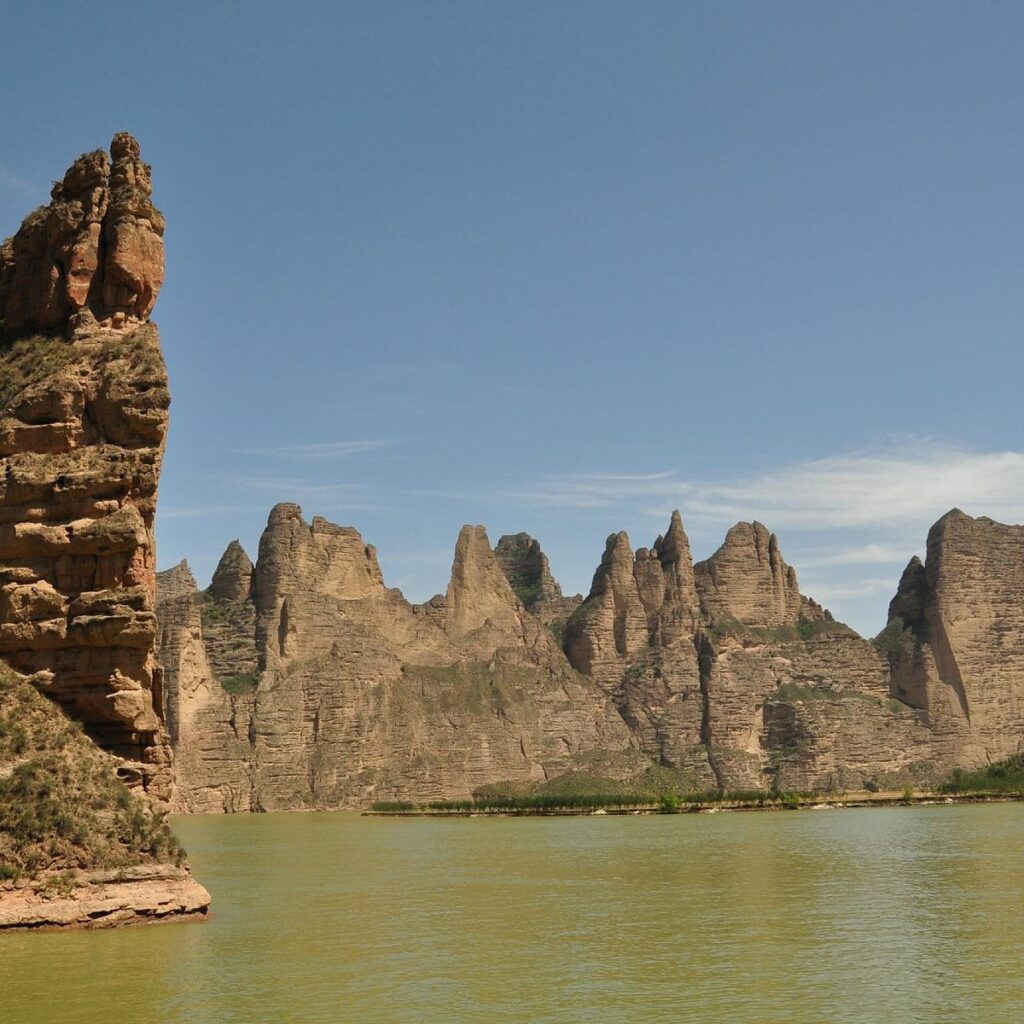
An Essential Guide to Visiting Bingling Temple Grottoes Complex
Nestled along the banks of the Yellow River in Gansu Province, the Bingling Temple Grottoes Complex is a breathtaking testament to ancient artistry and Buddhist devotion. Often overshadowed by China’s more famous attractions, this hidden gem is a sanctuary of history, boasting an astonishing collection of 183 caves, 694 stone statues, and 900 square meters of mesmerizing murals that date back over 1,600 years.
The name “Bingling,” which translates to “Thousand Buddhas” in Tibetan, encapsulates the awe-inspiring spirit of this site, where the fusion of nature and human creativity has resulted in a captivating landscape of spirituality and artistry. As you explore the intricate carvings and vibrant murals, you’ll not only witness the evolution of Buddhist art through different dynasties but also feel the pulse of history that emanates from these ancient rock formations.
Accessible by a scenic boat ride, the journey to Bingling Temple is as enchanting as the destination itself. The serene waters of the Yellow River provide a picturesque backdrop, enhancing your experience as you approach the west cliff of Dasigou on Jishi Mountain. Whether you are an art enthusiast, a history buff, or a seeker of tranquil beauty, the Bingling Temple Grottoes Complex promises an unforgettable adventure that invites you to delve deep into the rich tapestry of Chinese heritage.
Prepare to be captivated by the stories etched in stone and the spiritual serenity that envelops this remarkable site—an essential stop on any journey through China’s diverse cultural landscape.
In This Guide
- An Essential Guide to Visiting Bingling Temple Grottoes Complex
- The Rich History and Legends of Bingling Temple Grottoes Complex
- Main Highlights: What You Absolutely Can’t Miss
- Planning Your Visit: A Practical Guide
- Tickets: Prices, Booking, and Tips
- How to Get There: A Complete Transportation Guide
- Local Cuisine and Accommodation Nearby
- Frequently Asked Questions
- Final Thoughts on Your Trip
The Rich History and Legends of Bingling Temple Grottoes Complex
Nestled along the banks of the Yellow River in Gansu Province, the Bingling Temple Grottoes Complex is a treasure trove of art and history that dates back to the 5th century AD. This remarkable site, also known as the Binglingsi Grottoes or the Thousand-Buddha Caves, comprises an astonishing 183 caves and niches, showcasing nearly 700 stone statues and over 900 square meters of exquisite murals.
The history of Bingling Temple is rich and layered, beginning in 420 AD during the Western Qin Dynasty. Initially constructed as a Buddhist sanctuary, it became a significant center for Buddhist art, reflecting the cultural and spiritual currents of the time. The name “Bingling” translates from Tibetan as “Thousand Buddha,” aptly capturing the essence of this site, which has been a pilgrimage destination for centuries.
Throughout the centuries, the grottoes were expanded and embellished, with artists from various dynasties contributing their unique styles. The earliest sculptures, created during the Western Qin Dynasty, exhibit a fierce vigor, indicative of the period’s artistic expressions. As time progressed, particularly during the Northern Wei Dynasty, the artistry evolved to showcase a more refined and delicate aesthetic, aligning with the broader trends of Central Plains Buddhist art.
The Tang Dynasty marked a golden age for the Bingling Temple Grottoes, with approximately two-thirds of the current caves constructed during this period. The sculptures from this era are particularly noteworthy for their emphasis on the dynamism and vitality of the figures, culminating in the magnificent Great Maitreya Buddha. Standing at a staggering 27 meters, this statue embodies the artistic mastery of the Tang sculptors, characterized by its plump figure and gentle smile.
In addition to the sculptures, the murals of Bingling Temple Grottoes are a visual feast, though fewer in number. They provide invaluable insights into the aesthetics and social life of the Sixteen States Period, featuring depictions of music, dance, and decorative arts that flourished in northwest China at the time. Cave No. 169 stands out as the largest and most significant, housing numerous treasures that narrate the history and evolution of the site.
The inclusion of Bingling Temple Grottoes in the UNESCO World Heritage list in 2014 underscores its global significance, linking it to the Silk Roads and the intricate web of cultural exchanges that transpired along these ancient trade routes. As you explore this captivating site, the echoes of history and the whispers of legends come alive, inviting you to immerse yourself in the rich tapestry of China’s Buddhist heritage.
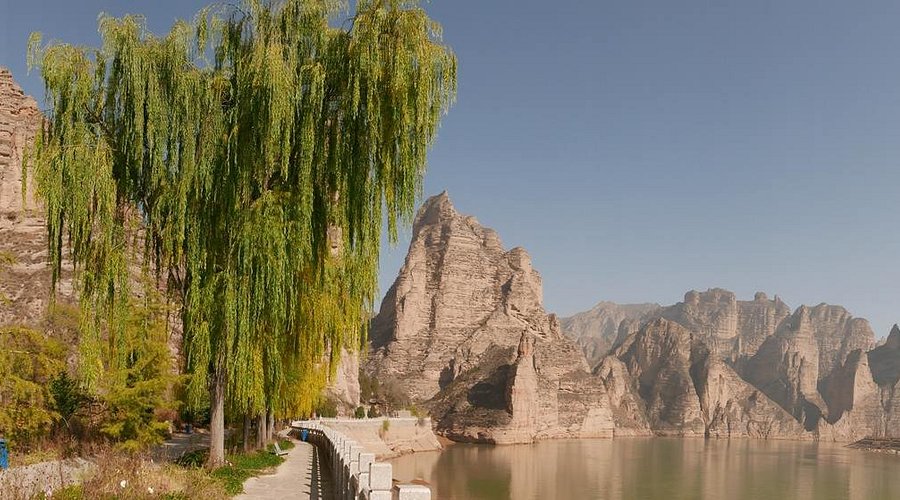
Bingling Temple Grottoes Complex.
Main Highlights: What You Absolutely Can’t Miss
The Bingling Temple Grottoes Complex is a hidden gem nestled along the banks of the Yellow River, captivating visitors with its stunning historical and artistic treasures. Here’s what you absolutely can’t miss during your visit:
1. The Majestic Great Maitreya Buddha
One of the most iconic sights at Bingling Temple Grottoes is the Great Maitreya Buddha, a stunning 27-meter high statue carved directly into the mountainside. This colossal figure, dating back to the Tang Dynasty, greets visitors with its plump, smiling face and warm demeanor. Despite some weathering, it remains a breathtaking testament to the superb craftsmanship of the era. Be sure to take a moment to appreciate the intricate details that reflect the skills of ancient sculptors.
2. Cave No. 169: The Crown Jewel
Don’t miss Cave No. 169, the largest and oldest cave in the complex, built around A.D. 420. This cave stands 50 meters above ground and is a marvel of natural architecture, featuring 24 niches adorned with exquisite sculptures and murals. Inside, you’ll find art that vividly reflects the social and cultural life of the time, making it a rich historical treasure trove.
3. Diverse Stone Sculptures
Unlike many grottoes that favor clay, Bingling Temple Grottoes features a wide array of stone sculptures across various dynasties. Explore the artistic evolution from the fierce and vigorous styles of the Western Qin to the delicate features of the Northern Wei and the elegant forms of the Sui and Tang dynasties. Each cave tells a different story, showcasing the evolution of Buddhist art in the region.
4. Murals from the Sixteen States Period
The complex may not boast an abundance of murals, but those that exist are exceptionally valuable. The murals from the Sixteen States Period (A.D. 304-439) are particularly noteworthy, reflecting the social customs, music, and dance of that era. As you wander through the caves, take the time to study these artworks, which offer a window into the cultural richness of ancient China.
5. Scenic Boat Ride on the Yellow River
Accessing the grottoes involves a scenic boat ride along the Yellow River, providing a unique vantage point of the stunning cliffs and the natural beauty surrounding the site. This journey enhances the experience, allowing you to soak in the serene beauty of the river as you approach the grottoes.
6. Cave Exploration
With 183 caves and niches to explore, each cave offers its own unique features and artistic expressions. Don’t rush through—take your time to appreciate the intricate carvings and the stories they tell. Notably, caves such as No. 125, 128, and 132 showcase the refined artistry of the Northern Wei Dynasty, while later caves highlight the dynamic and vibrant styles of the Tang Dynasty.
7. A UNESCO World Heritage Site
Finally, remember that Bingling Temple Grottoes is recognized as a UNESCO World Heritage Site as part of the “Silk Roads: the Routes Network of Chang’an-Tianshan Corridor.” This status not only underscores its historical significance but also enhances the experience of visiting a site that has been cherished for centuries.
Practical Tips
- Best Time to Visit: The ideal months are from July to November when the weather is pleasant.
- Visiting Duration: Allocate about half a day to fully enjoy the site.
- Opening Hours: The grottoes are open from 8:00 AM to 6:00 PM.
- Entry Fee: Tickets are reasonably priced at around ¥50.
Whether you’re an art enthusiast, a history buff, or simply in search of stunning landscapes, the Bingling Temple Grottoes Complex promises an unforgettable experience that beautifully intertwines culture, history, and nature.
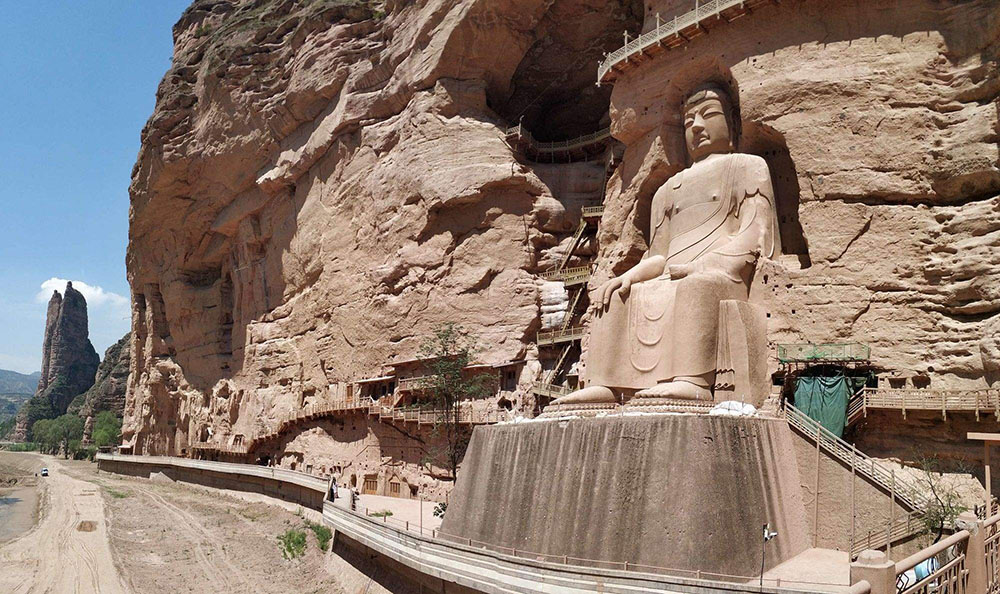
Bingling Temple Grottoes Complex.
Planning Your Visit: A Practical Guide
Visiting the Bingling Temple Grottoes Complex is a remarkable journey into ancient history, art, and spirituality. Nestled along the banks of the Yellow River in Gansu Province, this UNESCO World Heritage site offers international travelers a unique glimpse into a treasure trove of Buddhist art and architecture. Here’s everything you need to know to make the most of your visit.
Getting There
Location:
The Bingling Temple Grottoes are located approximately 35 kilometers south of Yongjing County in the Linxia Hui Autonomous Prefecture.
Transportation:
– By Car: Renting a car or hiring a driver provides the most direct access to the grottoes. The roads are generally in good condition, and the drive offers scenic views.
– By Public Transport: Buses run from Lanzhou to Yongjing County, but be prepared for a short taxi ride from the bus station to the grottoes themselves.
– Boat Access: You can also reach the grottoes via a boat ride along the Yellow River, which enhances the experience with stunning river views.
Best Time to Visit
The ideal time to explore the Bingling Temple Grottoes is from July to November when the weather is mild and conducive for outdoor sightseeing. However, do consider avoiding peak tourist periods to fully appreciate the serenity of the site.
Visiting Hours & Ticket Information
- Opening Hours: Daily from 8:00 AM to 6:00 PM.
- Admission Fee: The ticket price is ¥50 (approximately $7), which grants you access to the entire grotto complex.
Recommended Duration
Plan to spend about half a day at the Bingling Temple Grottoes. This allows ample time to explore the various caves, appreciate the intricate sculptures, and enjoy the breathtaking views of the surrounding landscape.
What to See
The Bingling Temple Grottoes boast a rich collection of 183 caves and niches, featuring 694 stone statues, 82 clay sculptures, and 900 square meters of murals. Key highlights include:
- Cave No. 169: The oldest and largest cave, showcasing an impressive array of sculptures and murals dating back to A.D. 420.
- The Great Maitreya Buddha: A stunning 27-meter statue carved into the mountainside, exemplifying Tang Dynasty artistry.
- Murals from the Sixteen States Period: These rare artworks provide insight into the social and cultural life of ancient northwest China.
Practical Tips
- Dress Appropriately: Wear comfortable shoes as you may need to walk and climb stairs while exploring the complex.
- Photography: Bring a camera to capture the stunning scenery and intricate details of the sculptures. However, be respectful of any signs regarding photography restrictions inside the caves.
- Guided Tours: Consider hiring a local guide or joining a tour for deeper insights into the historical and cultural significance of the grottoes.
- Local Cuisine: After your visit, enjoy some local food at nearby eateries to experience the flavors of Gansu Province.
Nearby Attractions
If time allows, explore additional attractions in the region:
– Lanzhou: The capital of Gansu Province, known for its stunning landscapes and rich cultural heritage.
– Other Grottoes in Gansu: The nearby Mogao Caves in Dunhuang are also a UNESCO World Heritage site and are well worth a visit.
Conclusion
The Bingling Temple Grottoes Complex offers an extraordinary blend of art, history, and natural beauty, making it a must-visit for anyone traveling through Gansu Province. With a little planning, you can immerse yourself in the rich heritage of this hidden gem along the Yellow River.
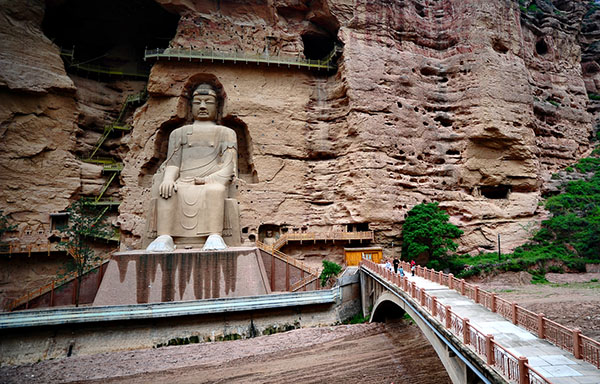
Bingling Temple Grottoes Complex.
Tickets: Prices, Booking, and Tips
When planning your visit to the captivating Bingling Temple Grottoes, it’s essential to know all the details regarding ticket prices, booking options, and handy tips to enhance your experience.
Ticket Prices
The admission fee for the Bingling Temple Grottoes is ¥50 (approximately $7 USD). This ticket grants you access to explore the stunning caves, intricate sculptures, and beautiful murals that date back more than 1,600 years.
Booking Information
Tickets for the grottoes can typically be purchased on-site upon your arrival. However, it’s wise to check with local travel agencies or online platforms in advance, especially during peak tourist seasons (July to November). If you’re part of a guided tour, your ticket may already be included in the package.
For those looking to enhance their journey, numerous tour operators offer customizable packages that include transportation, guided tours, and additional attractions in the Gansu region. You can easily contact these agencies via email or phone to inquire about tailored options.
Contact Information for Booking:
– Email: [email protected]
– Phone: +86-28-85223672 / +86-191-3897-0032
Visiting Tips
-
Best Time to Visit: The ideal months to explore the Bingling Temple Grottoes are from July to November when the weather is pleasant and the natural scenery is at its best.
-
Plan for Half a Day: Allocate approximately half a day to fully enjoy the grottoes. This will give you enough time to take in the breathtaking views and appreciate the intricate details of the sculptures and murals.
-
Transportation: The grottoes are located about 35 km south of Yongjing County. Consider renting a car or joining a guided tour for convenient access, as public transportation options may be limited.
-
Cash is King: While some places might accept digital payments, it’s advisable to carry some cash to cover your entrance fee and any incidental purchases nearby.
-
Stay Hydrated: As you explore the grottoes, remember to bring water with you, especially during warmer months. The site can involve a fair amount of walking, so staying hydrated is crucial.
By understanding the ticketing process and preparing adequately, you can ensure a smooth and enriching visit to this UNESCO World Heritage site. Enjoy the spiritual and artistic treasures that Bingling Temple Grottoes have to offer!
How to Get There: A Complete Transportation Guide
Reaching the Bingling Temple Grottoes, a stunning UNESCO World Heritage site, requires a bit of planning but promises a rewarding adventure. Nestled along the banks of the Yellow River, this remarkable complex of caves and sculptures is located approximately 35 kilometers south of Yongjing County in Gansu Province. Here’s a comprehensive transportation guide to help you make your way there seamlessly.
Getting to Yongjing County
By Air
The nearest major airport to the Bingling Temple Grottoes is Lanzhou Zhongchuan International Airport (LHW). This airport connects with several major cities in China, including Beijing, Shanghai, and Chengdu. Upon arriving at Lanzhou, you have a few options to continue your journey to Yongjing County:
-
Direct Bus from Lanzhou Airport: There are shuttle buses that can take you directly from the airport to Lanzhou’s city center, where you can catch further transport to Yongjing.
-
Taxi: Taxis are readily available at the airport. A direct taxi ride to Yongjing County will take around 1.5 hours but could be more costly.
By Train
If you prefer to travel by train, Lanzhou is well-connected by a robust railway system. Here’s how you can proceed:
-
Train to Yongjing: From Lanzhou Railway Station, take a train directly to Yongjing Station. The train journey lasts approximately 1 to 1.5 hours. Check the schedule ahead of time to ensure you catch a convenient train.
-
Local Transport from Yongjing Station: Upon arriving at Yongjing Station, you can hire a taxi or use local buses to reach the Bingling Temple Grottoes. The distance from the station to the grottoes is about 35 kilometers, so expect a travel time of around 30-45 minutes.
Getting to Bingling Temple Grottoes
Once you’ve arrived in Yongjing County, you have a couple of options to reach the grottoes:
By Boat
One of the most scenic ways to arrive at the Bingling Temple Grottoes is by boat, navigating along the Yellow River. Here’s how to do it:
- Boat Ride: From Lianghekou Port, you can catch a boat that takes you directly to the grottoes. The boat ride offers breathtaking views of the surrounding landscape and typically lasts about 1 hour. Boats operate regularly, but it’s advisable to confirm the schedule in advance.
By Road
If you prefer to travel by road, here are your options:
-
Taxi or Private Car: Hiring a taxi or car from Yongjing County to the grottoes is straightforward. Ensure to negotiate the fare beforehand if you’re using a taxi. The drive will take roughly 45 minutes, depending on traffic conditions.
-
Local Tours: Many local tour operators offer guided trips from Yongjing County to the Bingling Temple Grottoes. This can be a convenient option, allowing you to focus on enjoying the experience without worrying about logistics.
Tips for Your Journey
- Best Time to Visit: The ideal time to explore the Bingling Temple Grottoes is between July and November when the weather is pleasant.
- Tickets: Entrance tickets can be purchased on-site for approximately ¥50. Ensure you have some cash on hand, as not all places may accept credit cards.
- Plan Ahead: Since the grottoes are a popular destination, consider visiting early in the day to avoid crowds and fully appreciate the serenity of this ancient site.
With this guide, your journey to the Bingling Temple Grottoes will be as remarkable as the destination itself. Enjoy the stunning sculptures, ancient murals, and the breathtaking scenery that surrounds this hidden gem on the Yellow River!
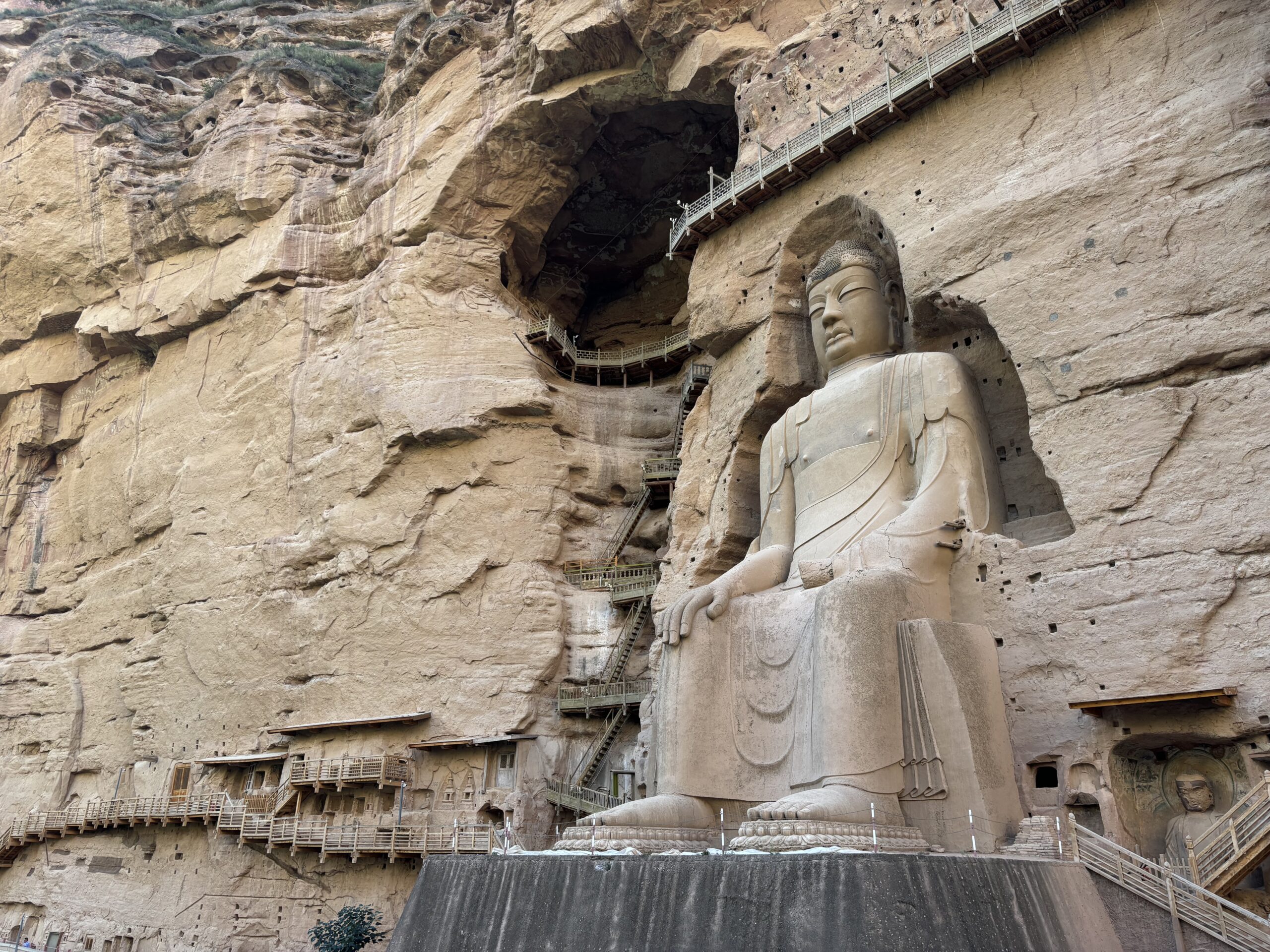
Bingling Temple Grottoes Complex.
Local Cuisine and Accommodation Nearby
Exploring the Bingling Temple Grottoes Complex is not just a feast for the eyes but also an opportunity to indulge in the local flavors and enjoy comfortable accommodations nearby. Nestled in the stunning landscapes of Gansu Province, the region offers a rich culinary scene and a variety of lodging options to enhance your visit.
Local Cuisine
When visiting the Bingling Temple Grottoes, don’t miss out on sampling the local delicacies that reflect the unique culture of Gansu. The area’s cuisine is heavily influenced by the diverse ethnic communities that inhabit the region. Here are some must-try dishes:
-
Lanzhou Beef Noodles (兰州牛肉面): Famous throughout China, this dish features hand-pulled noodles served in a savory beef broth, garnished with fresh cilantro and chili oil. You can find local eateries that serve this dish with a unique twist, highlighting the flavors of Gansu.
-
Bingling Roast Lamb: A specialty of the region, this dish is prepared using traditional cooking methods, resulting in tender, flavorful meat. Often served with a side of flatbread, it’s a perfect meal after a day of exploring.
-
Tibetan Yogurt: Given the cultural influences from the Tibetan communities nearby, trying the local yogurt is a must. It’s rich and creamy, often served with honey or fruit, and makes for a delightful snack.
-
Dried Fruit and Nuts: Gansu is known for its high-quality dried fruits, such as apricots and goji berries. These make for a healthy and energizing snack while you explore the grottoes.
Accommodation
After a day of exploration, you’ll want a comfortable place to rest your head. Here are some accommodation options nearby that cater to various budgets:
-
Bingling Temple Resort Hotel: Located just a short distance from the grottoes, this hotel offers stunning views of the surrounding landscape. With cozy rooms and modern amenities, it’s a perfect base for your adventures. The on-site restaurant serves local cuisine, making it easy to enjoy authentic dishes without venturing far.
-
Linxia Hui Autonomous Prefecture Guesthouse: This guesthouse provides a more traditional experience, allowing you to immerse yourself in the local culture. With simple yet comfortable accommodations, it’s an excellent option for travelers looking for an authentic stay.
-
Yongjing County Hotel: Situated near the town center, this hotel offers easy access to shops and restaurants. The rooms are clean and well-appointed, making it a convenient choice for those looking to explore the area further.
-
Homestays: For a truly immersive experience, consider booking a homestay with a local family. This option not only provides a unique glimpse into daily life in Gansu but also offers the chance to enjoy home-cooked meals made from fresh, local ingredients.
Whether you’re savoring the mouthwatering local dishes or relaxing in comfortable accommodations, your visit to the Bingling Temple Grottoes Complex will be an unforgettable experience that tantalizes both your taste buds and your spirit of adventure.
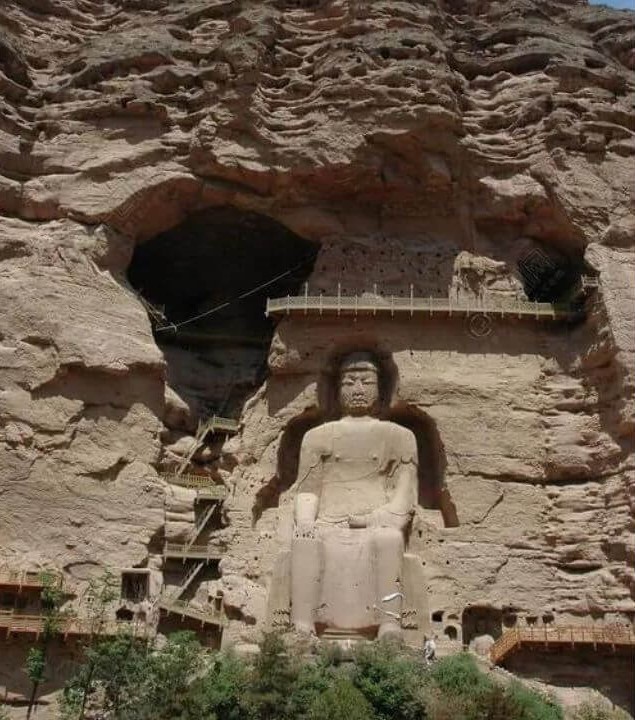
Bingling Temple Grottoes Complex.
Frequently Asked Questions
Frequently Asked Questions
1. What are the opening hours for Bingling Temple Grottoes?
The Bingling Temple Grottoes are open daily from 8:00 AM to 6:00 PM. It’s advisable to arrive early to fully enjoy the site without the crowds.
2. How do I get to Bingling Temple Grottoes?
The grottoes are located about 35 kilometers south of Yongjing County in Gansu Province. You can reach them by taking a local bus or taxi from Yongjing. Additionally, access to the grottoes is typically via a scenic boat ride on the Yellow River, enhancing your visit with beautiful views.
3. How much does it cost to enter the site?
The entrance fee for Bingling Temple Grottoes is ¥50 (Chinese Yuan). This fee grants you access to explore the grottoes and enjoy the stunning sculptures and murals.
4. What is the best time of year to visit?
The ideal time to visit Bingling Temple Grottoes is from July to November. During these months, the weather is generally pleasant, making it more enjoyable to explore the outdoor aspects of the site.
5. How long should I plan to spend at Bingling Temple Grottoes?
A visit typically takes about half a day. This allows enough time to appreciate the various caves, sculptures, and murals, as well as to soak in the scenic beauty of the Yellow River.
6. Are there guided tours available?
Yes, guided tours are available and can greatly enhance your experience by providing in-depth information about the history and significance of the grottoes. Many tour companies offer tailor-made packages that include transportation and guides.
7. What should I wear and bring for my visit?
Wear comfortable walking shoes, as you will do a fair amount of walking and climbing. Additionally, bring water, sunscreen, and a hat, especially during the warmer months, to stay hydrated and protected from the sun.
8. Are there facilities for food and rest near the grottoes?
While there are limited facilities directly at the grottoes, some nearby areas may offer food options. It’s advisable to bring snacks or a packed lunch, especially if you plan to spend several hours exploring. Rest areas may be available, but check ahead to ensure you have a comfortable experience.
Final Thoughts on Your Trip
As your journey at the Bingling Temple Grottoes Complex draws to a close, take a moment to reflect on the rich tapestry of history and artistry that enveloped you during your visit. This hidden gem, nestled along the banks of the Yellow River, is not just a site of stunning rock carvings and ancient murals; it is a testament to the enduring spirit of cultural exchange along the Silk Road.
Each cave, with its intricate sculptures and vibrant murals, tells a story of devotion and craftsmanship that has transcended centuries. The serene beauty of the surrounding landscape only enhances the experience, inviting you to appreciate the delicate balance between nature and human creativity.
Whether you’re an art aficionado, a history enthusiast, or simply a curious traveler, the Bingling Temple Grottoes offer a unique glimpse into China’s spiritual heritage. As you leave this remarkable site, may the echoes of the past inspire you to explore further and to seek out the stories that lie hidden in the world’s corners. Carry with you the serenity and wonder that these ancient walls impart, and let them fuel your wanderlust for future adventures.